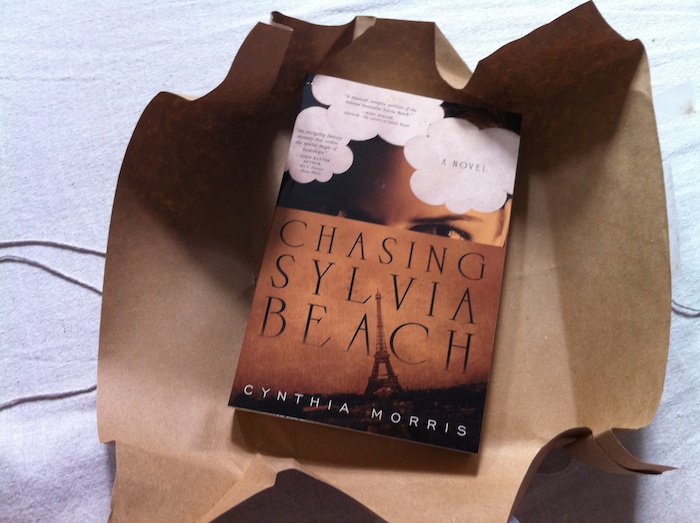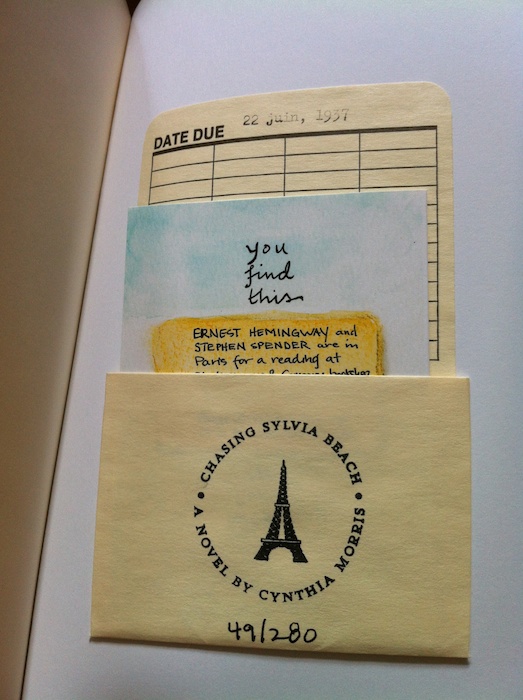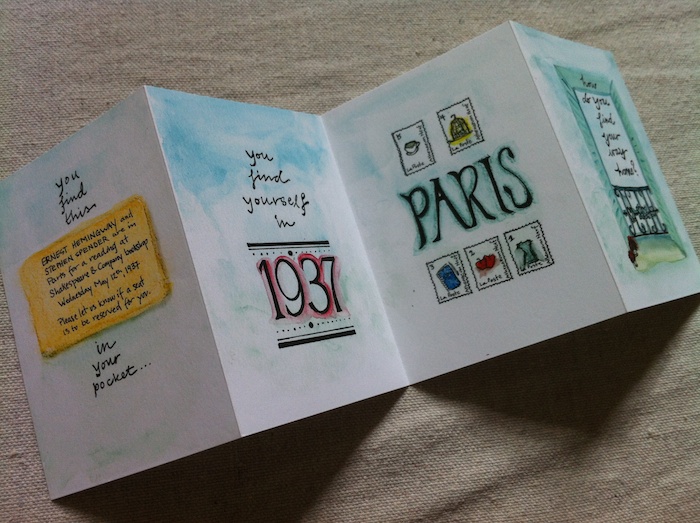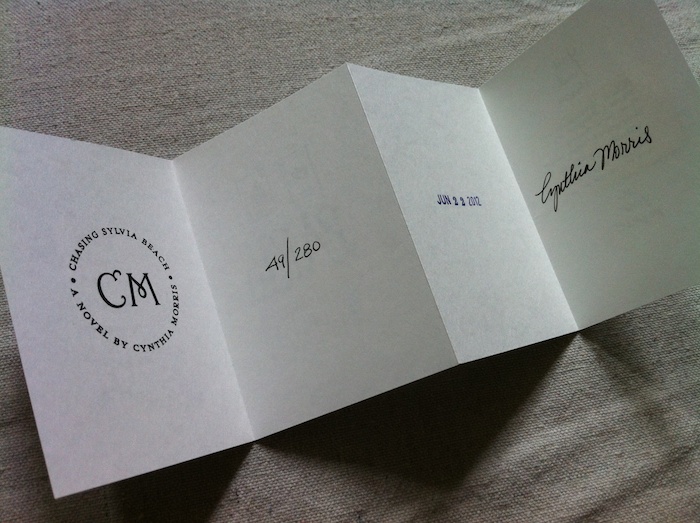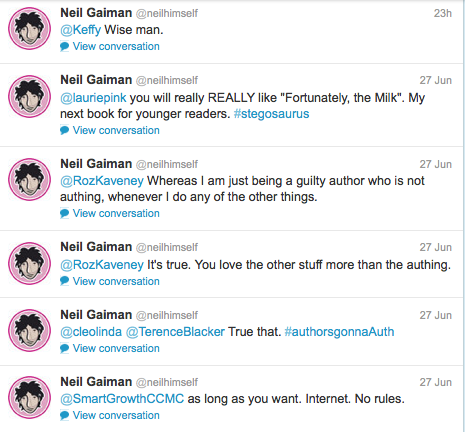Like many of you, I am a fan of Seth Godin. This past week he launched a Kickstarter project for his next book, and today, I want to dig into what we can – and can’t – learn from it.
Others have lavished praise on every aspect of what Seth has done with this project, notably Fred Wilson and Mike Masnick. They certainly see the bigger picture of what Seth is doing here, but I want to get more granular.
I became aware of the project at around 8am Monday morning, soon after it launched, when he had 229 backers and $19,838 in donations. About an hour later, he had $51,833 with 657 backers. Another hour or two later, he was at $91,166 with 1,251 backers. By 1:30pm, he had $118,326 with 1,671 backers. At the end of the first week, he has $221,901 in donations and 3,251 backers.
It’s interesting to see which of the packages he offered gained traction first. There were 10 options, so if you donated a certain amount of money, you would get different things in return. Often, it was a combination of different books, and different quantities of them. There was an 11th option, which was really just a joke, and he later removed. Each level had a limited number of packages available. This is what it looked like throughout the early part of Monday, the columns represent each price level (from a $4 donation up to the $10,000 donation), and how many backers he had at each of four time slots that I checked. The pink color represents when each price level sold out:
| Time |
$4 |
$22 |
$49 |
$62 |
$76 |
$111 |
$200 |
$360 |
$665 |
$1,150 |
$10,000 |
| 8am |
45 |
226 |
19 |
17 |
4 |
41 |
14 |
5 |
1 |
5 |
0 |
| 9am |
113 |
186 |
80 |
48 |
8 |
150 |
35 |
14 |
7 |
5 |
0 |
| 11am |
258 |
300 |
180 |
81 |
16 |
307 |
50 |
26 |
12 |
5 |
0 |
| 1:30pm |
441 |
300 |
200 |
117 |
32 |
459 |
50 |
32 |
16 |
5 |
0 |
Below are some thoughts on what we can – and can’t – learn from Seth Godin’s Kickstarter project:
ENGAGE PEOPLE WITH SUPPORTING A CAUSE, NOT BUYING A PRODUCT
There is a tone throughout the Kickstarter description that asks us to prove something to someone. That there is an “other” that we must fight against. Seth says:
“Please help me show my publisher, the bookstores and anyone with a book worth writing that it’s possible to start a project with a show of support on Kickstarter.”
This is a theme throughout the piece, that this isn’t just about publishing a book, this is about taking a stand. I am a bit surprised by some of this, because it seems to imply that maybe there was a heated debate where a world-renowned author and marketing expert (SETH!) went back and forth with his publisher about whether you could engage people via Kickstarter. That he spoke to bookstore owners who actually considered not stocking his books. Was it ever up for debate that someone with a loyal following such as Seth Godin could get donations from their fans, or that bookstores would stock his bestselling books?
Regardless, the larger theme goes beyond “buy my next book.” There is almost an “us vs them” attitude here, and certainly a focus that this is about supporting a cause, an ideal, not just buying a book. We see this again after the (really compelling) description of his book:
“My first new printed book in over a year is combined with two extraordinary bonuses—and the chance to send a message about how books and bookstores can still be part of the conversation. (Be sure to check out the no-brainer option).”
So two things are happening here. Again, this isn’t about how powerful his book is (although it does sound powerful in its own right), but this is about “SENDING A MESSAGE!” This is portrayed not as selling his book, but supporting an idea. That books can “still be a part of the conversation.”
But then we switch back from supporting an ideal, to buying his book as a symbolic act. Half a breath away from his rallying cry that we are sending a message, he encourages you to buy the 8th option, meaning there are 7 less expensive options. It’s $111 and called the “NO BRAINER” option to somehow make it seem obvious that we should buy EIGHT copies of his book months before it comes out. Now, this option is a good deal with all you get, 11 books (including limited edition books) for $10 each. But it’s always interesting when you are first encouraged to buy 8 of something as the obvious choice. This is, I suppose, meant to drive home the idea that by buying more of Seth’s books, we are “SENDING A MESSAGE” to someone.
Later in the post, he repeats this: “Did I mention the No-Brainer option is your best bet?”
A bit further down, he hits this same “US VS THEM” point again, positioning him and us as the underdog:
“Sink or swim–I’ll need your help. If this Kickstarter campaign reaches the minimum, then the publisher has agreed to launch a major retail campaign to introduce the book to readers in bookstores.”
Seth is right, Kickstarter only works if we actually get involved and donate. But seriously: is there any chance that Seth Godin wouldn’t raise $40,000 for this project within 30 days? He charges $800+ for a one day workshop to see him speak. His books are wildly popular. He is cited time and time again as a brilliant thinker in terms of marketing.
I could be reading this wrong, but it again seems to paint his publisher as folks who either don’t believe in his work or don’t believe in physical books. That ONLY if Seth raises $40,000 will they promote his book in bookstores? REALLY? Exactly which person sat across the table as Seth told him about his new book, and then said to him: “Gee Seth, I don’t know, can you PROVE to us that we should promote your book in bookstores?” Who? Who said that to bestselling author Seth Godin?
And since this is the crux of the campaign, I would love some clarity on what “a major retail campaign” entails. What will happen if he didn’t meet the $40,000 threshold? Would there just be a “minor” retail campaign? What would the difference be? To me, this seems to be a very important point.
There was also this line:
“Only my loyal, intelligent and good-looking Kickstarter backers can get the limited edition book.”
I only bring this up because if Home Depot said this in a Kickstarter campaign, they would be called out and held up as those who “don’t get it.” That blindly gushing about your audience in this manner can be seen as a marketing tactic to generate sales, not something a true tribe leader would do, but something a politician would do. I just didn’t want to overlook that because if a corporation did it, NO ONE would overlook it.
Seth goes on:
“Maybe this will help authors like me continue to make books by hand, and maybe this Kickstarter will outline a way other authors can rally a tribe, connect them, engage the early adopters and then reward them with an artifact they helped bring to life.”
Really? Without Kickstarter, authors like Seth Godin won’t be able to publish physical books? And what does “by hand” mean? This is not a letterpress book is it? Is there really any danger of Seth’s books not coming out in print form? Maybe Seth has lots of data here, lots of examples, but I just wish he would have shared it within the context of this campaign, to educate us about the issue. Otherwise, I am left guessing, and I am reminded again of a political candidate making a claim without backing it up. That we are asked to rally together to protect something, and the only way to do so is elect this person, or in this case, buy this person’s book.
The overall point he makes is dead-on accurate: Kickstarter helps creators, writers and artists. I LOVE THAT. And of course, I love how Seth is making such a big deal about supporting Kickstarter. He explains it this way:
“This project on Kickstarter is my way to organize the tribe, to send a signal to risk-averse publishers and booksellers (who have limited shelf space and limited paper). We can let them know loud and clear that this is a book that’s going to get talked about. Kickstarter coordinates and it amplifies.”
But again, it seems odd to lump Seth Godin into the crowd of people fighting for bookstores to consider carrying him. Is there really a chance that a bookstore wouldn’t make space for his physical books? If you go to his homepage, he describes himself immediately and exclusively as: “Seth Godin: best selling author.” When you click on each book on the homepage, he tells you how well they have sold, with phrases such as:
- “Book of the year”
- “An instant best seller”
- “The classic named “best book” by FORTUNE”
- “The worldwide bestseller”
And those are for just for some of his physical books. To me, I would guess that any physical retailer would stock Seth’s books because he is a known bestseller who is incredibly relevant to the conversation in many topics nowadays. But his campaign seems to be a rallying cry to “show them” that both he and physical books are not irrelevant. Was this in question?
What Seth illustrates so clearly is that people want to turn their belief into action. They want to support those who inspire them in deeper ways and they often want recognition for doing so. Every aspect of this campaign illustrates the power of Kickstarter, the power of his supporters, and Seth’s brilliant marketing mind.
SET AN ARTIFICIALLY LOW GOAL
Seth set the goal comically low for the Kickstarter campaign at $40,000. Given the size of his audience, was it really possible that he wouldn’t exceed his goal quickly? So why do this? Because it writes the headline for every article reporting on his project: “Seth Godin blows away Kickstarter goal by 500%!”
He talked about this as well: that the real momentum happens once you reach your goal.
This is meant to show immediate success, that we are sending “a message,” that his publisher was skeptical, but we would “show them.”
With Amanda Palmer’s fortune with Kickstarter, we are in the gold rush for already successful people to become Kickstarter media darlings. My gut is you will see this again and again throughout 2012. It’s great marketing.
VALUE MATTERS, NOT PRICE
The VALUE of each package mattered, not the price. Some of the 10 packages Seth offered had unique value in them, not just the commodity of a book that in a year’s time, anyone who wants one can have. Two packages sold out quickly: higher priced options where either Seth interviewed you or you received a limited edition art print.
When I first saw this around 7:30 or 8am on Monday, the only package that was sold out was the one I was most interested in… for $1,150:
“Your story, told. I’ll interview you and write at least a paragraph about something brave or powerful or remarkable you’ve done or built–and include it in all editions of The Icarus Deception. I can offer this without fear of being stuck or compromising the work because everyone has something artistic in their history (and their future). Also includes everything in the No-Brainer level. Also includes access to the preview digital edition.”
This is – by far – the best deal on the page. A chance to speak with Seth, have him craft your story, and actually include it in the final version of the physical book. That is easily worth $1,150, and I would have jumped on that opportunity. Why? Well, consider what it means to ensure that EVERYONE who reads his book reads about your story, told in the way only Seth Godin can tell it. What it means to get a positive testimonial by Seth Godin. Definitely worth $1,150 without even a moments thought.
He offered some limited edition books as well, but many of the other price levels were for multiple copies of the same book or packages with copies of books he has already published. Those took longer to sell out, or are still available.
THE HIGHEST PRICE LEVEL: DON’T WASTE THE OPPORTUNITY TO DO SOMETHING EXTRAORDINARY
Seth added a $10,000 package as a sort of joke. I see now that he removed this option at some point during the week, but this is what it originally said:
“The really silly high-level product that everyone always scrolls down to see, so they can chuckle at the insane thing the author is offering and the crazy person who bought it. This package includes signed copies of Catcher in the Rye and Shakespeare’s folio. Both signed by me. And whatever book of mine you like. And a milk carton. With Purple Cow in it.”
It should have been a personal appearance by Seth, a consulting session, a custom video, something meaningful. Something where he would donate the $10,000 to charity in exchange for someone taking the chance.
PEOPLE WANT TO BE INSIDERS
People like being the first to see something – the chance to be an early adopter, and therefore, an influencer and connector. The first to Tweet it. I did, it was my first Tweet Monday morning. It was clear this would be something special, which is why I also took screenshots of it right away.
People want to be insiders. They want to say: “I saw this early, and I backed Seth Godin.” It’s akin to saying “I saw the Pixies play live in 1986 before you even heard of them.” There is social cred in fandom. Kickstarter is brilliant at offering this to fans. It makes you feel special.
OFFER BULK SALES AND DISCOUNTS
As I mentioned, many of the packages offered multiple copies of the book, and for each higher level you bought, the lower the cost of each individual book would be. He says:
“Sometime after your copy is delivered in January, the Icarus book will show up (at a higher price) in bookstores and online. You can help me make the minimum by buying copies now, at a discount, to distribute to friends.”
Months before the book comes out, he is going for bulk sales, which is smart on several levels. And of course: it supports his overall goal to ensure that physical books are shared among friends and colleagues.
Overall, I hope I have conveyed that I am a fan of Seth’s work, and impressed at his ability to change people’s lives for the better. But I think the details described above matter for other authors considering using Kickstarter. Seth has clearly proven that Kickstarter is a powerful means to bring people together for a common purpose, and infuse it with financial backing. This IS important. Is it a powerful message to publishers? You tell me.
Thanks.
-Dan
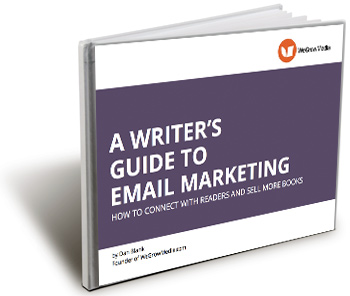
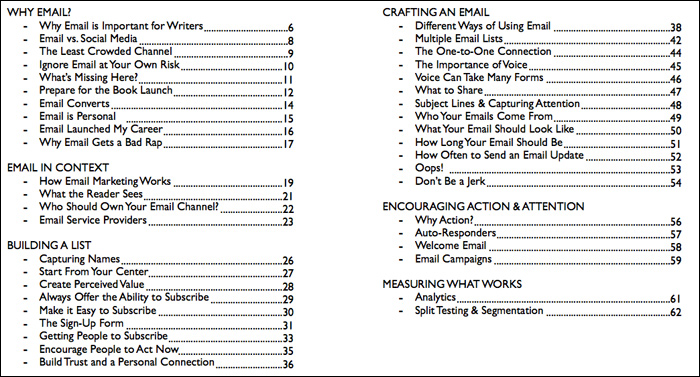
 This 60+ page PDF ebook is guaranteed to supercharge your email marketing efforts. If you aren’t completely satisfied within 30 days, I am offering a 100% money-back guarantee. There is literally no risk.
This 60+ page PDF ebook is guaranteed to supercharge your email marketing efforts. If you aren’t completely satisfied within 30 days, I am offering a 100% money-back guarantee. There is literally no risk. My name is Dan Blank, and I help writers build their platforms, and work with publishers to grow their online communities. I have worked with hundreds of writers to help them develop the skills they need to build and engage their audiences. I have taught courses for Writer’s Digest and Mediabistro, and spoken at many of the major publishing and writing conferences. For my full background, please check out my bio and LinkedIn profile.
My name is Dan Blank, and I help writers build their platforms, and work with publishers to grow their online communities. I have worked with hundreds of writers to help them develop the skills they need to build and engage their audiences. I have taught courses for Writer’s Digest and Mediabistro, and spoken at many of the major publishing and writing conferences. For my full background, please check out my bio and LinkedIn profile.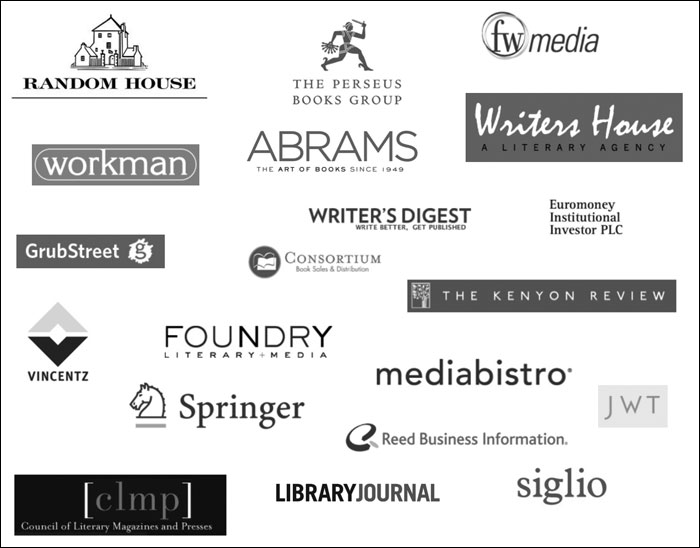
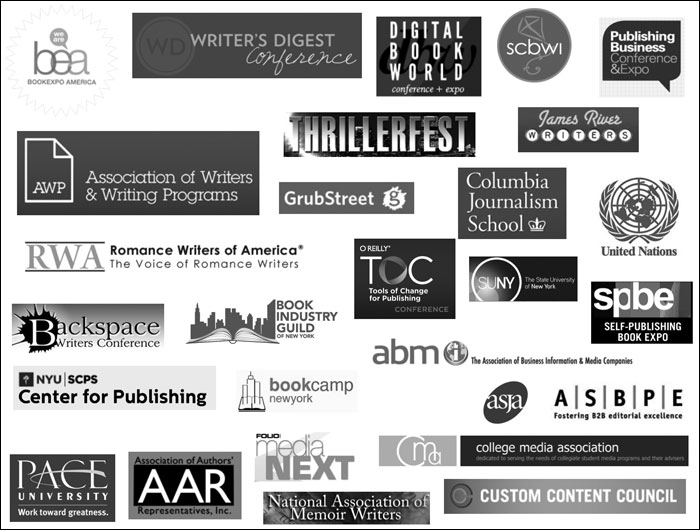

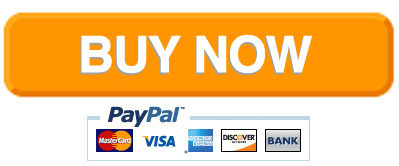
 In this guest post, Writer’s coach and author
In this guest post, Writer’s coach and author 
